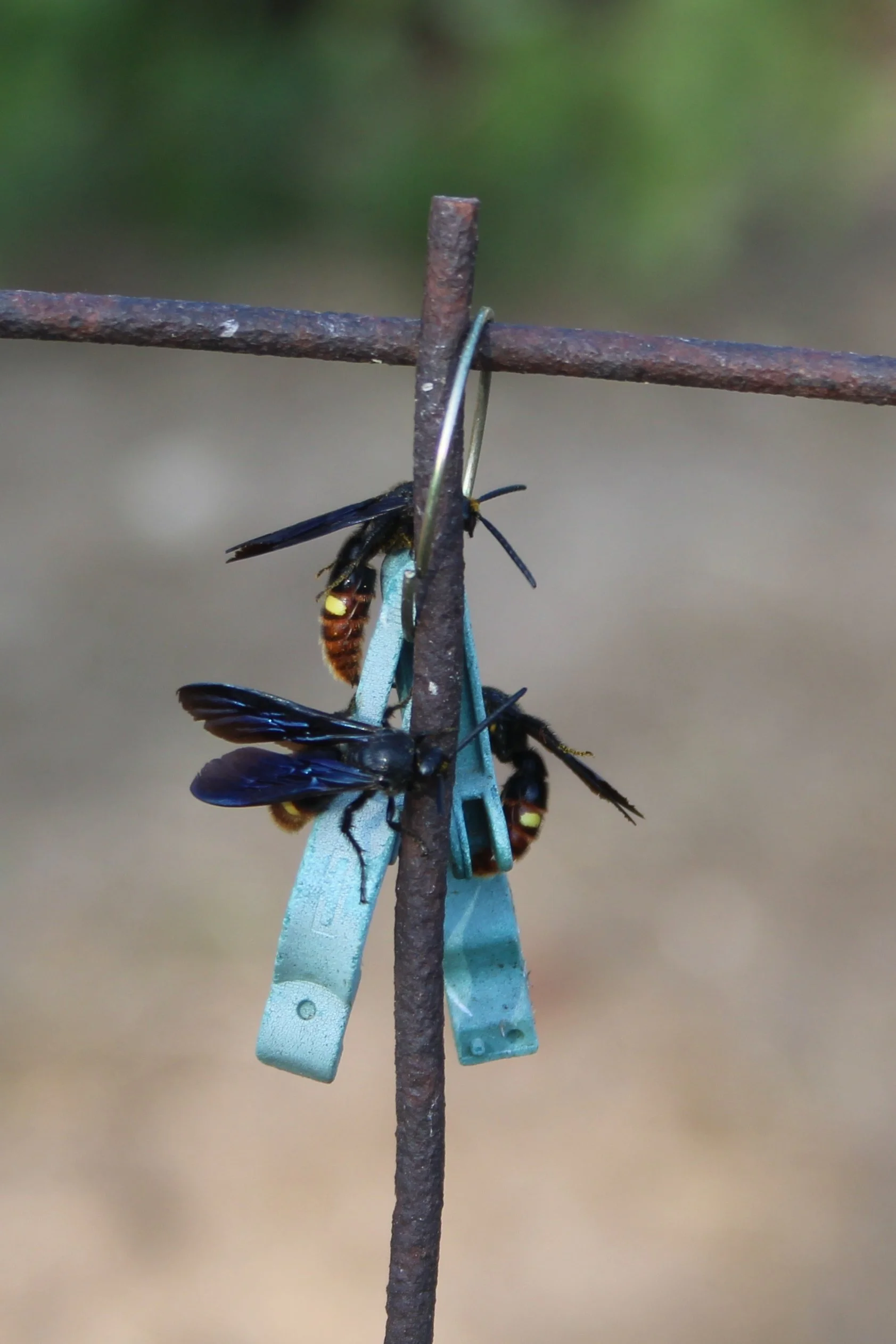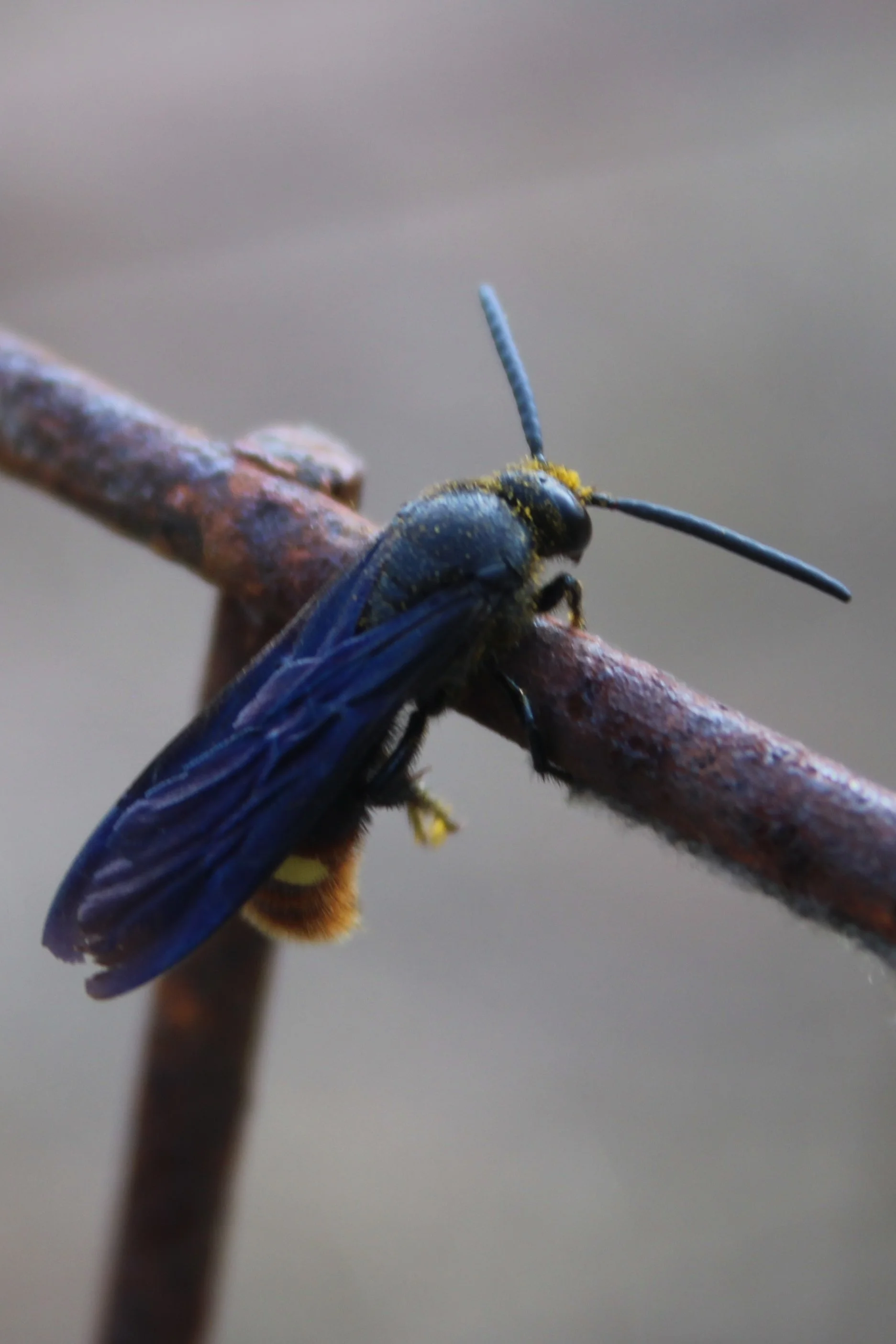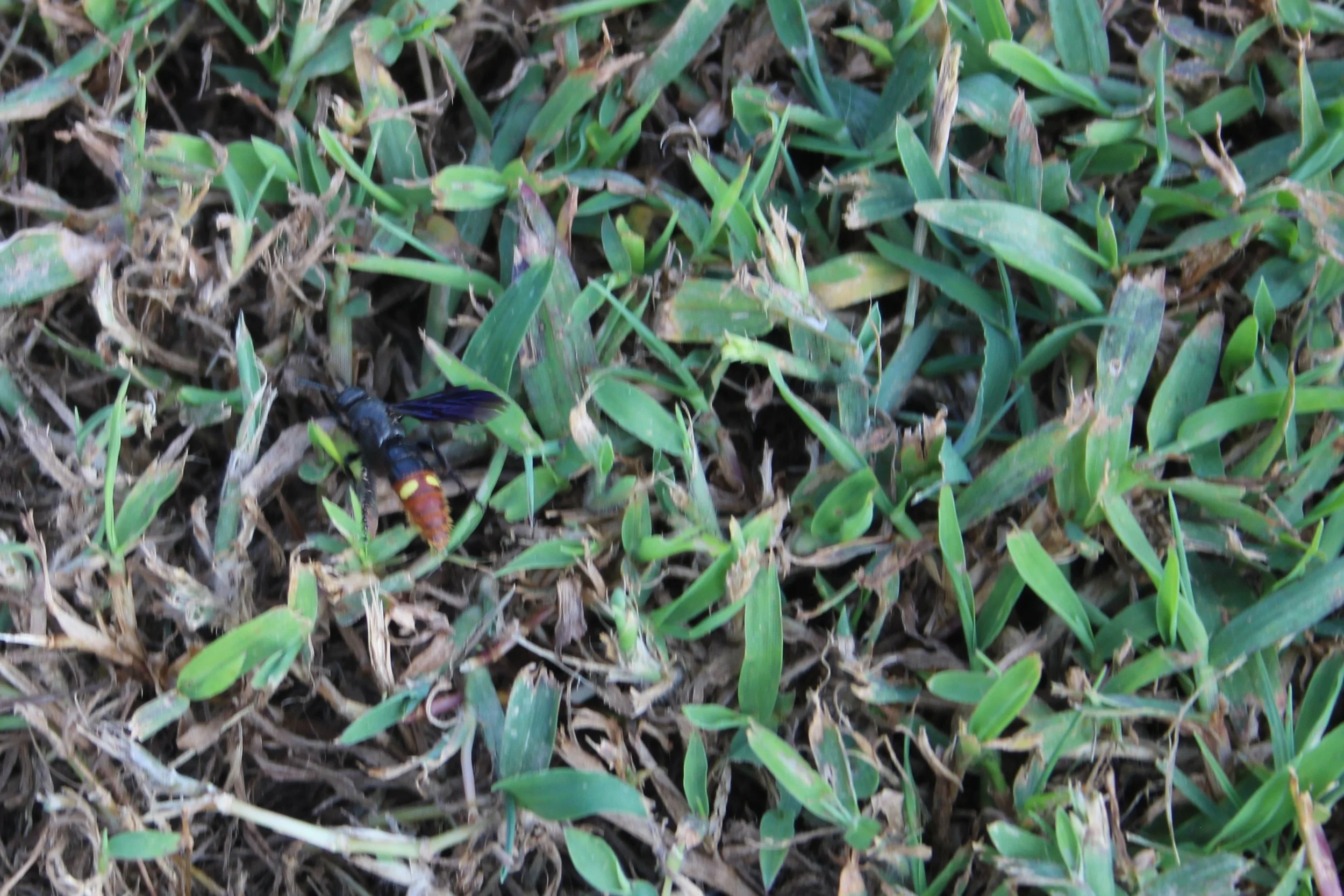I have a new, favorite insect: blue-winged wasps. Some of you may recall that last year I had enormous numbers of June bugs and Japanese beetles hovering over the pasture next to my orchard. (If you want a refresher, click HERE.) At the time, I was determined to purchase and apply a product to kill the grubs that hatch into these eating machines. Life got in the way, and I never did the research to determine which grub killer was the best choice – you know, the right product to address these specific insects, toxic enough to be effective but not so toxic that it would kill beneficial insects. So, the year went by without any insecticide application. And Mother Nature did the work for me, free of charge.
Scolia dubia, commonly known as two-spotted scoliid wasps, blue-winged scoliid wasps or digger wasps, have pretty blue wings, black head and thorax with a rusty-colored abdomen, with a couple of yellow blobs on their rear segments. Females are not aggressive, and won’t sting you unless you really, really mess with them. Males do not have the capacity to sting. They will let you get up close and personal with a cell phone. Despite groups of them congregating in the late afternoon on the wires of my protective cages around blueberry plants, they are known as solitary wasps. This means that they nest alone and feed their babies alone, unlike hornets or paper wasps that live in communes.
When I see large number of these wasps zooming around the pasture just a few inches above the ground, they are shopping for a family dinner. Guess what is on the menu? It is the white grubs that develop into June bugs and Japanese beetles! When the wasp detects a grub, she dives into the soil (see common names above – “digger” wasps) and paralyzes the grub with a sting, then lays her egg on the grub’s body. When the egg hatches, the hatchling’s first meal – a dinner that lasts about two weeks -- is the paralyzed grub. The wasp larva spins a cocoon and becomes a prepupa in the Fall and rests during winter. As warm temperatures return, the prepupa becomes a pupa, which then molts into an adult that emerges in the Spring.
While any insect that hunts and destroys Japanese beetle grubs is a hero in my estimation, blue-winged wasps are also good pollinators. They visit goldenrod often, so check yours out to see if you are hosting these very good bugs.
Blue-winged wasps congregate on fence wire just before dusk.
This blue winged wasp has a dusting of pollen on her head after visiting the nearby pollinator garden.
Not a great photo, but this wasp has detected a white grub under the turf. She drove into the ground and emerged after depositing her egg on the grub.



